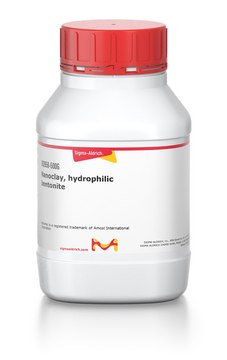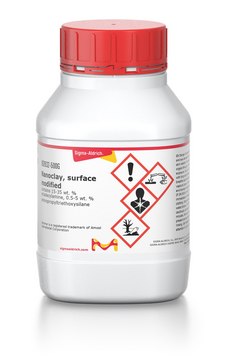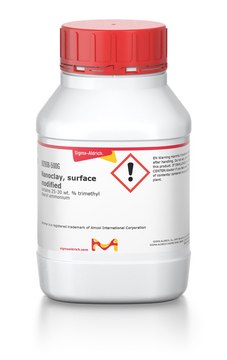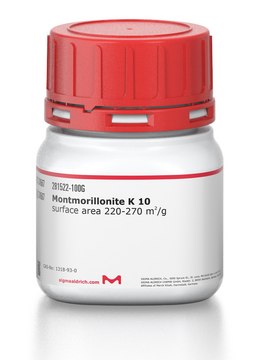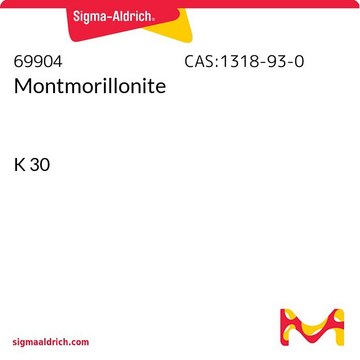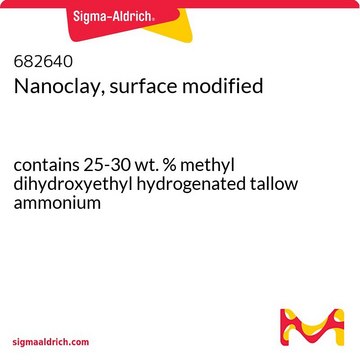682624
Nanoclay, surface modified
contains 35-45 wt. % dimethyl dialkyl (C14-C18) amine
Synonym(s):
Nanomer® I.44P, Nanomer® clay, Montmorillonite clay
Select a Size
Select a Size
About This Item
Recommended Products
form
powder
contains
35-45 wt. % dimethyl dialkyl (C14-C18) amine
matrix
Montmorillonite clay base material
particle size
≤20 μm
Looking for similar products? Visit Product Comparison Guide
Related Categories
Application
- Improve modulus
- Increase barrier
- Enhance chemical resistance
- Improve flame retardancy
- Increase heat deflection temperature (HDT)
Legal Information
Product of Nanocor®, Inc.
Signal Word
Danger
Hazard Statements
Precautionary Statements
Hazard Classifications
Aquatic Acute 1 - Aquatic Chronic 1 - Eye Dam. 1
Storage Class Code
11 - Combustible Solids
WGK
WGK 3
Flash Point(F)
Not applicable
Flash Point(C)
Not applicable
Personal Protective Equipment
Regulatory Information
Choose from one of the most recent versions:
Already Own This Product?
Find documentation for the products that you have recently purchased in the Document Library.
Articles
Nanoclays are clay minerals optimized for use in clay nanocomposites– multi-functional material systems with several property enhancements targeted for a particular application.
Nanoclays like montmorillonite and bentonite are used in polymer-clay nanocomposites, rheology modifiers, and drug delivery carriers.
We have discussed shortly the applications of 1:1 and 2:1 phyllosilicate material in membrane technology, as well as the basic geometric understanding of their layered structures.
Graphene's unique properties spark interdisciplinary interest; its honeycomb structure offers electrical, optical, and mechanical marvels.
Our team of scientists has experience in all areas of research including Life Science, Material Science, Chemical Synthesis, Chromatography, Analytical and many others.
Contact Technical Service